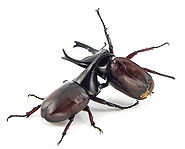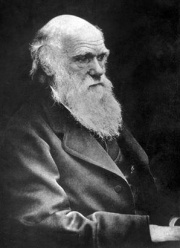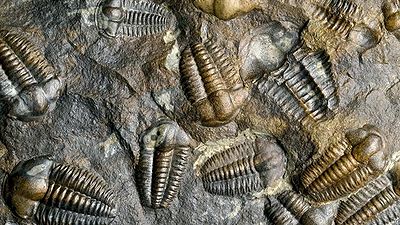Difference between revisions of "Evolutionary Biology Spring 2015"
(→Course Overview) |
|||
| Line 1: | Line 1: | ||
| − | <span style="font-size: x-large">EEB 2245</span><br> | + | <span style="font-size: x-large">EEB 2245/2245W</span><br> |
<span style="font-size: large">''Evolutionary Biology''</span><br> | <span style="font-size: large">''Evolutionary Biology''</span><br> | ||
== '''Course Overview''' == | == '''Course Overview''' == | ||
Revision as of 23:57, 13 January 2015
EEB 2245/2245W
Evolutionary Biology
Contents
Course Overview
Meeting Time: Tuesdays and Thursdays, 9:30-10:45 in TLS154
Textbook: Futuyma, D.J. 2013. Evolution. 3rd ed. Sinauer Associates, Inc. (ISBN 978-1-60535-115-5)
Objectives: The objectives of this course are to familiarize students with the mechanisms of evolutionary change (processes of evolution), major patterns of evolution, and the history of the diversity of life.
This website contains information for the lecture portion of the course only.
Instructors
First half of the course, 20 January - 5 March
Dr. Elizabeth Jockusch
Office: BPP 305B
Phone: 486-4452
Office hours: 11-12 Tuesdays or by appointment
Second half of the course, 10 March - 7 May
Dr. Chris Simon
Office: BPP 305D
Phone: 486-4640
Office hours: Anytime by appointment
Teaching Assistants
James Bernot
Office: TLS 478
Phone: 486-1882
Last names A-F
Office hours: By arrangement
Veronica Bueno
Office: TLS 478
Phone: 486-1882
Last names G-N
Office hours: By arrangement
Geert Goemans
Office: BPP 323
Phone: 486-3947
Last names O-Z
Office hours: By arrangement
Grading
EEB 2245 Grading: Activities (30 pts); Exam 1 (50 pts); Exam 2 (100 pts); Exam 3 (50 pts); Exam 4 (100 pts); Final Exam (70 pts). Exam 4 will be given on the same day as the comprehensive final.
EEB 2245W Grading: Your grade in the lecture portion of the course will be calculated as above. This grade will constitute 75% of your final course grade. Your grade in the W part of the course, as determined by your W instructor, will constitute the remaining 25% of your final course grade, except that an F in the W part of the course will result in an F for the entire course. An F in the lecture part of the course will also result in an F for the entire course.
Course Policies
Lecture Expectations:
- Arrive on time and stay until the end. If you must come late or leave early, sit by the back door.
- Turn cell phones OFF and store them out of sight.
- Use laptops only for taking notes or other activity directly related to class.
Activities: During the first half of the semester, there will be opportunities to earn points from a mixture of in-class and out-of-class activities. Each will be worth 3 points. A minimum of 13 opportunities will be available and the best 10 will count towards the final grade. Out-of-class activities must be submitted by the specified deadline for credit. No late assignments will be accepted. In-class activities must be submitted during the class period in which they take place. No make-ups will be given.
Missed exams: Any student who misses an exam without advance permission will receive a 0 for the assessment. Permission to miss an exam requires, but is not guaranteed by, verifiable written documentation of the reason. A student who receives permission to miss an exam will have his or her grade for the missed work prorated based on his or her performance on the remainder of the exams. We will not give make-ups. Every student must take the final exam (and exam 4) during the scheduled final exam period unless permission to reschedule is obtained through the Dean of Students Office
Academic integrity: Plagiarism and cheating are violations of the student conduct code, and may be punished by failure in the course or, in severe cases, dismissal from the University. For more information, see Appendix A of the Student Conduct Code
Disabilities: If you have a disability for which you may be requesting an accommodation, you should contact a course instructor and the [www.csd.uconn.edu Center for Students with Disabilities] (Wilbur Cross Building, Room 201) within the first two weeks of the semester.
Class objectives: The objectives of this course are to familiarize students with the mechanisms of evolutionary change (processes of evolution), major patterns of evolution, and the history of the diversity of life.
Lecture Syllabus
Please read assigned chapters, as indicated below, prior to class
| Date | Topic | Readings | Study Questions / Problem Sets |
|---|---|---|---|
| Part I: Jan 20 - Mar 6, Dr. Elizabeth Jockusch | |||
| Jan 20 | Class organization; Introduction to the study of evolutionary biology | Ch 1 | study questions |
| Jan 22 | Variation and the Hardy-Weinberg equilibrium | pp 217-228 | study questions |
| Jan 27 | Mutation and sampling effects | Ch 8, pp 257-267 | study questions |
| Jan 29 | Migration and non-random mating | pp 229-233; 245-249 | study questions |
| Feb 3 | Conservation applications of population genetics | -- | study questions |
| Feb 5 | EXAM 1 (50 pts) & Natural selection | Ch 11 | study questions |
| Feb 10 | Evidence for natural selection | Ch 11 | study questions |
| Feb 12 | Genetics of natural selection | Ch 12 | study questions |
| Feb 17 | Modes of natural selection | Ch 12 & 13 | study questions |
| Feb 19 | Sexual selection and female choice | Ch 15 | study questions |
| Feb 24 | Genetic conflict and levels of selection | Ch 16 | study questions |
| Feb 26 | Geographic variation and speciation | pp 483-491 | study questions |
| Mar 3 | Mechanisms of speciation | pp 483- 491 | study questions |
| Mar 5 | EXAM 2 (100 pts) | ||
| Part II: Mar 10 - May 7, Dr. Chris Simon | |||
| Mar 10 | Speciation mechanisms (continued) | Ch 17 & 18 | study questions |
| Mar 12 | Hybridization, reproductive character displacement, and speciation | Ch 17 & 18 | study questions |
| Mar 17 | SPRING BREAK | ||
| Mar 19 | SPRING BREAK | ||
| Mar 24 | Systematics, the study of biodiversity and its origins. Problems in constructing relationships: polymorphisms and homoplasy. Tree thinking. |
Ch 2 & 3 | study questions |
| Mar 26 | Homoplasy (continued): convergence, parallelisms, and reversals in evolution. | Ch 2 & 3 | study questions |
| Mar 31 | Reconstructing evolutionary trees from morphological and molecular data. How molecules evolve. |
Ch 2 & 3 | study questions |
| Apr 2 | The tempo of molecular evolution; is there a molecular clock? | Ch 2 & 3 | study questions |
| Apr 7 | A review of the tree of life and the major innovations in animal evolution. EXAM 3 (50 pts) |
||
| Apr 9 | Overview of life continued. The origin of evolutionary novelties: Body plans, constraints; pre-adaptation, modification of existing traits: gene duplication, gene regulation. |
Ch 21 & 22 | study questions |
| Apr 14 | Evolutionary novelties (continued) Homeobox genes, Master control genes. Flies with eyes on their wings. Ontogeny and phylogeny, Allometry. | Ch 21 & 22 | study questions |
| Apr 16 | Introduction and overview of the fossil record. The origin of life. The RNA world. Prokaryote world. The origin of animals; the Ediacaran Fauna. Mass extinctions. |
Ch 4 & 5, pp 168-171, Box 7A | study questions |
| Apr 21 | The Paleozoic: Cambrian explosion (or was it?). The origin of vertebrates and the invasion of land. Ordovician (the age of jawless vertebrates), Silurian (first life on land), Devonian (the age of fishes). Carboniferous (Dragonflies w/ 2 ft. wing span, clubmoss forests); Permian. The origin of mammals. The Permo-Triassic boundary mass extinction. | Ch 4 & 5, 168-171, box 7A | study questions |
| Apr 23 | The Mesozoic: The age of reptiles. Pangea breaks up followed by Laurasia and Gondwanaland. The evolution of birds from dinosaurs, insects and angiosperms radiate. The K-T Boundary. The extinction of the dinosaurs. Birds and mammals cross the boundary. | Ch 4, 5 & 6 | study questions |
| Apr 28 | The Cenozoic: Greenhouse to Icehouse. Continental drift, land bridges, mountain building. Modern biogeographic distributions take shape. The great American interchange. Primate evolution. | Ch 4, 5 & 6 | study questions |
| Apr 30 | Human evolution; Mitochondrial Eve and her relatives. Africa, our most diverse continent. Humans invade Asia and the Pacific and later North America. Biogeography and Biodiversity. | Ch 4, 5 & 6 | study questions |
| May 7 | EXAM 4 (100 pts) & COMPREHENSIVE FINAL EXAM (70 pts) |


